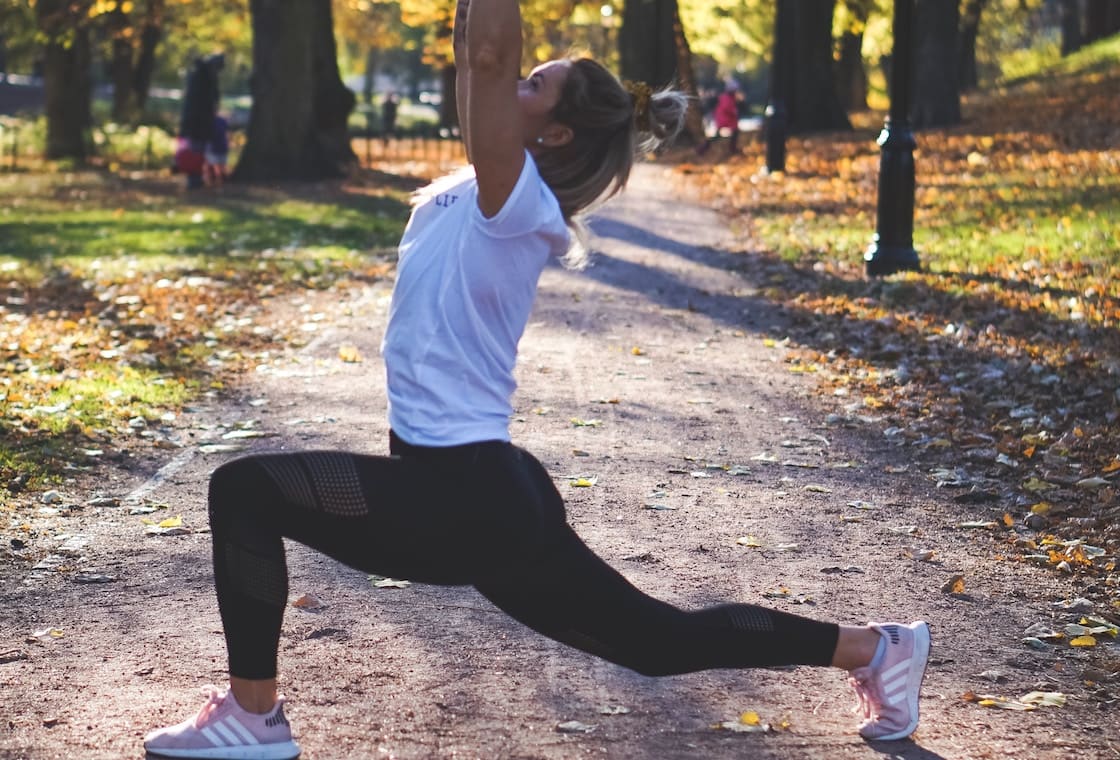Our Tips to Stay Fit While Traveling
Use exploring as an excuse to exercise.
Go for a run on a beachfront esplanade, or tackle a steep set of stairs to visit a monument. Pack a good pair of running shoes, and take your phone to track your steps. Also, try a new class like spin or yoga at a local studio. You can meet people with similar interests, and even if there is a language barrier during the class, you can generally figure it out by instructors’ movements.
Buy basic workout equipment.
This small investment pays off. Purchase a cheap yoga mat and bring resistance bands for an at-home work out when you don’t have time to hit the gym. Apps like Nike Training Club or Sweat with Kayla Itsines have workouts that can be done anywhere, with or without equipment. For extra weight, try using large water bottles (or wine bottles) for squats and lunges.
Everything in moderation.
You’ve heard this before, but it’s extra important when traveling. Of course, go enjoy tapas in Spain and beer in Budapest, but while maintaining your health. One of the best parts of spending time abroad is merging your lifestyle with the culture of your new home. That’s why having your own apartment while abroad is so important. Make a simple healthy breakfast at home or toss together a salad with fresh market fish and veggies for dinner. Balancing your diet is key to experiencing the delicious food of the region, and knowing what choices provide nutritious, satisfying meals.
 Shop at local markets.
Shop at local markets.
In cities across Europe (and elsewhere) markets provide easy access to fresh ingredients. There’s a reason nutritionists recommend perimeter shopping at the grocery store. A market is the more authentic, local version of perimeter shopping, as most vendors sell fresh, healthy, local and delicious foods.
Establish a new routine.
Your routine won’t be the exact same as at home, but that is a good thing! Figure out the best time to work out, shop for healthy foods, and include downtime for reflection. If you’re adjusting to a warmer climate, beat the heat and go for a run in the morning. Possibly the most important, take time to reflect on your new experiences. Your mental health is as important as physical, so take time to work on mindfulness and appreciate your adventure. When you book with Behere while working remotely, you’ll be able to make your own schedule and have a foundation.
Stretch
Take time to stretch! Before and after long flights this is especially important. After long workdays as well. Five minutes of stretching can go a long way so stand up, lay down, however you prefer – stretch it out!
Using these tips can ensure you stay healthy while enjoying your time traveling. Adapting your current routine, and making changes to suit your new environment will set you up for success. Remember, it’s all about balance and staying active, so you can forget about any post-baguette regret!
Behere was created for you – to help you keep your routine, and stay productive, while in new cities. Plan your next trip below, in less than 2 minutes!
Written by Katie Tatham and Meesen Brown.




 Community/Happenings
Community/Happenings


 The climate is great in Lisbon, with fairly mild winters and hot, hot, hot summers. Like other cities in Europe, if you prefer to visit when there are less people around, the shoulder seasons of March – June and September – December are the best times to visit. Summer is of course beautiful here too, however it’s quite busy and super hot (hello 90F, 40C).
The climate is great in Lisbon, with fairly mild winters and hot, hot, hot summers. Like other cities in Europe, if you prefer to visit when there are less people around, the shoulder seasons of March – June and September – December are the best times to visit. Summer is of course beautiful here too, however it’s quite busy and super hot (hello 90F, 40C).






 Tia Meyers is the founder of
Tia Meyers is the founder of 
